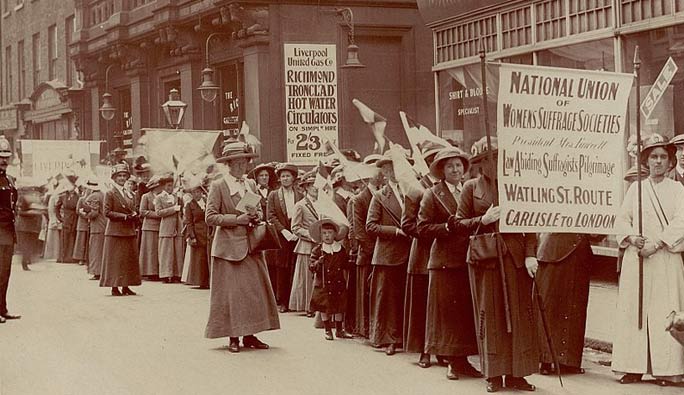
Holding my £5 note with Winston Churchill’s face on it to buy my period supplies, would normally bring me anger, as this country still glorifies a man who worked against women having the right to vote.
However, more recently, I have turned my attention away from those who opposed women’s suffrage to concentrate, instead, on those women who campaigned for the vote. For example, I recently learned about Eliza Simmons, a servant girl who smashed Churchill’s window in 1910 to protest that women should be seen as actual citizens.
Remembering working women
During Women’s History Month it is easy to continue to celebrate the big names of Millicent Fawcett and Emmeline Pankhurst, and women who came from means. Yet, more should be done to remember the working women who were subjected to horrific treatment whilst fighting for their rights. This blog will hopefully begin to rectify my previously narrow lens of the suffrage movement by considering the treatment of working-class suffragettes.
Working-class suffragettes were generally treated a lot worse that their middle-class counterparts. The story of “Jane Warton” is indisputable evidence of this. By 1910, Lady Constance Lytton was convinced of the divide in the prison experiences of different classes of women, so she disguised herself as a seamstress named Jane Warton. She was imprisoned for the third time at Walton gaol in Liverpool where she was treated horrendously, especially in comparison to her experience as a Lady. No health checks were undertaken, and she was forced fed in gruesome conditions. A video showing the force-feeding equipment used in Walton gaol is shown below. This force-feeding experience was cited as contributing to her death 13 years later, as well as other working-class women who were subjected to this violence by the state.
Campaigning for the vote
Another aspect of the women’s suffrage movement that is often overlooked is the role that women in domestic service played in campaigning for the vote, as demonstrated by the historian Laura Schwartz. First-wave feminism was about establishing women’s role in the public sphere and allowing women to be emancipated in that respect. Many middle-class women argued that they could not be emancipated if they were expected undertake the labour intensive and monotonous domestic work in keeping a house, so they used servants to maintain their homes.
This was a prevalent issue in numerous ways. No laws protected those in servitude in the same way they protected women who worked in industrial jobs. One calculation estimates that these servants were being paid about a penny per hour. Furthermore, their long hours meant that they could not always participate in marches or meetings, even though many wrote eloquent letters of their experiences and views on the movement to suffrage newspapers. Clearly, these women wanted to be involved in the debates that dictated their future but because of their circumstances, they could not as easily be involved in pressuring for change constitutionally. Consequently, they often went against their mistresses and undertook a more militant approach.
Class barriers
One such person was the aforementioned Eliza Simmons, who told a reporter that "she would devote her whole time to help the cause if she were in a position to do so” ('A Job Like Any Other?', by Laura Schwartz.) Class barriers sometimes prevented working-class women from partaking in the women’s suffrage movement to the extent that they would like. Yet, they did help forge the change that we are grateful for today. It serves as a reminder that without means, we can still advocate in our own way for proper change.
So now when I look at Churchill’s face, I can replace that feeling of rage with one of admiration and inspiration of the working women who fought for my right to vote and to be viewed as whole citizens.
If you would like to learn more about the experiences of women in the Liverpool regions, check out the Sisters of Mersey app.
Sophia is an undergraduate student in the department of history.
Discover more
Visit our Women's History Month hub.
Find out more about studying history at Liverpool.